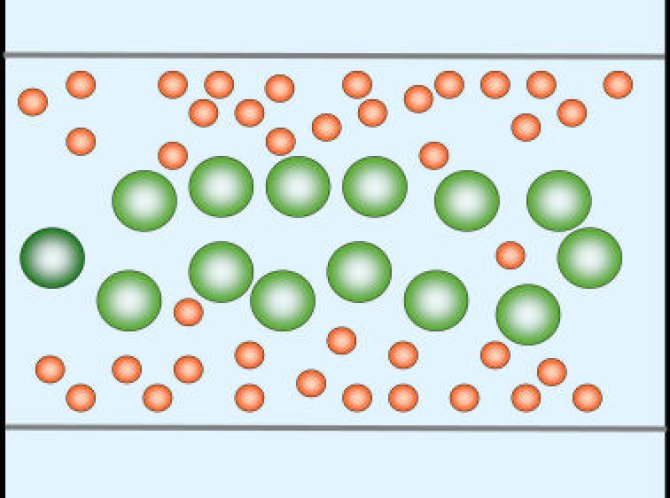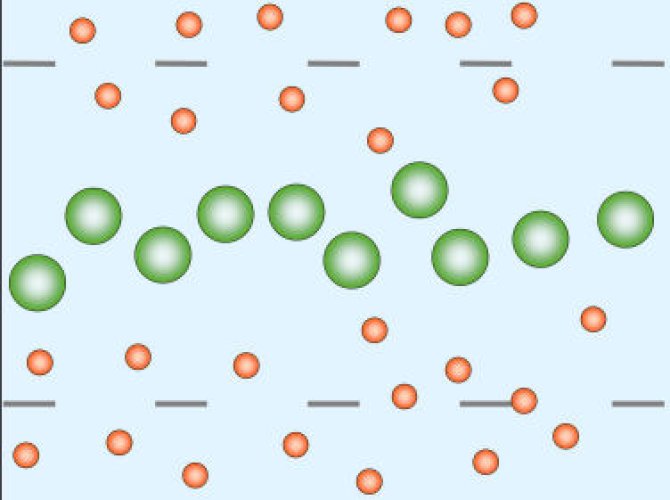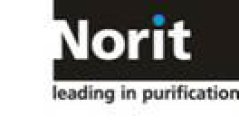Project
Mild Fractionation of Suspensions and Emulsions (experimental)
(Part of the “Shear-Induced Fractionation Technology” project of the Dutch Separation Technology Institute)

Introduction
In the food industry, fractionation of components from foods with the aid of membranes is increasingly performed. A large disadvantage of fractionation with membranes is accumulation of components on or near the membrane, causing reduced flux. This cake layer formation is called fouling. The cake is not infinitely increasing in height, since there is also back-transport of particles from the cake towards the bulk. One of the back-transport mechanisms is shear-induced diffusion. This phenomenon occurs when particles are subjected to shear, which is created due to local differences in velocity. Particles diffuse towards the bulk, where low shear is present.
Besides investigating shear-induced diffusion as back-transport mechanism, studies also looked at particle distribution of suspensions under the influence of shear. In these studies it was concluded that larger particles migrate with a larger diffusion coefficient than the smaller particles (figure 1). In this way shear-induced migration enables separation on size of the feed flow and makes it useful for fractionation [1].
Figure 1: Size separation based on shear-induced diffusion
Aim of the project
The aim of the DSTI project is to obtain process conditions, system geometries and design under which fractionation of particles, using shear induced diffusion, is optimal.
Approach
As a start, fractionation experiments will be performed with membrane systems (figure 2)

The larger particles (green) will migrate to the centre of the channel, while the smaller particles (red) will migrate over a shorter distance. The pores are larger than the particles, in order to minimize the effect of fouling on the membrane. Optimization of the fractionation yield, by changing process conditions like feed flow velocity, trans-membrane pressure and feed concentration, will be aimed for.
Additionally, a method to quantify shear-induced diffusion will be developed, by online measurement of the particle and fluid behaviour. From the data, knowledge will be obtained about the optimal process conditions and system geometries. The improved or new system acquired, should lead to increased fractionation efficiency and reduced fouling under mild processing conditions. This, in turn, reduces energy use and saves costs of separation in food industries, like dairy and beer.References
1. Kromkamp van der, J., Shear induced fractionation of particles. 2006.



This project is carried out within the framework of DSTI and is conducted in cooperation with Norit X-Flow, Friesland Campina and Royal Cosun.